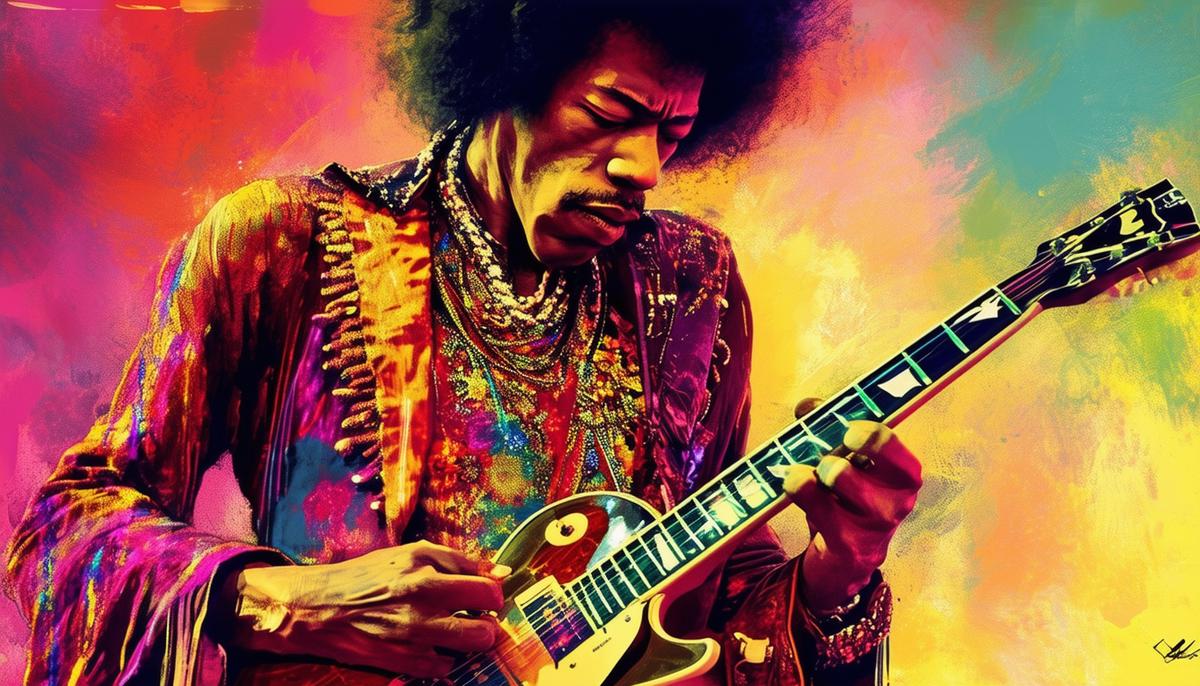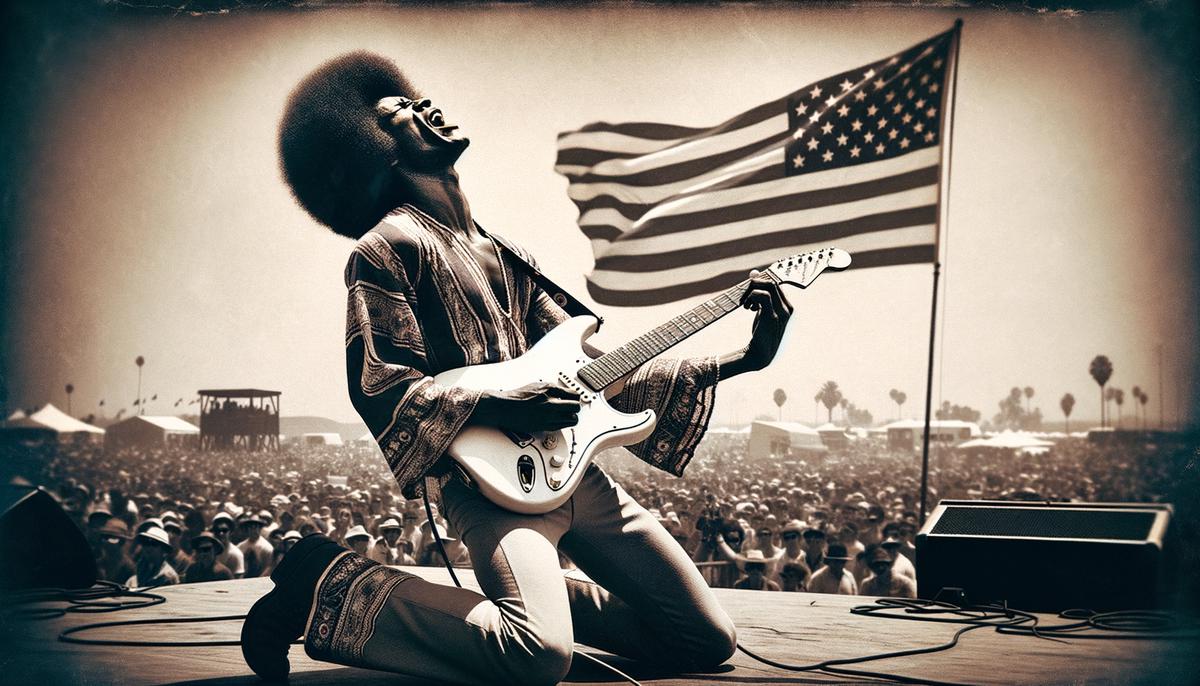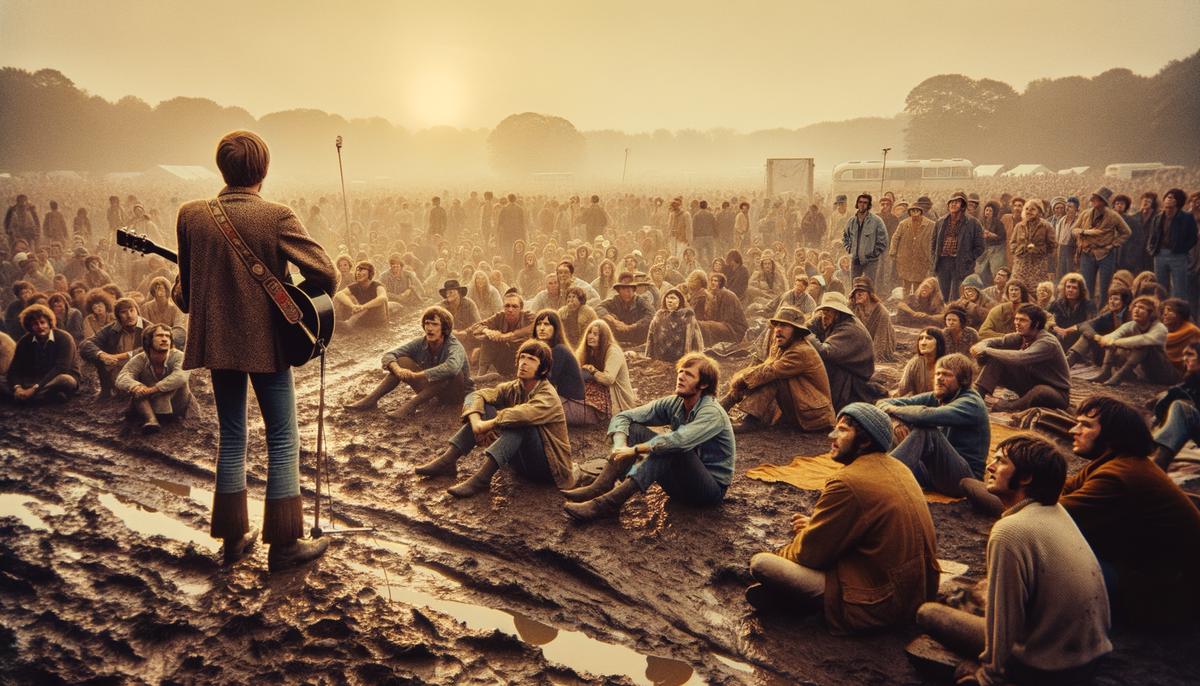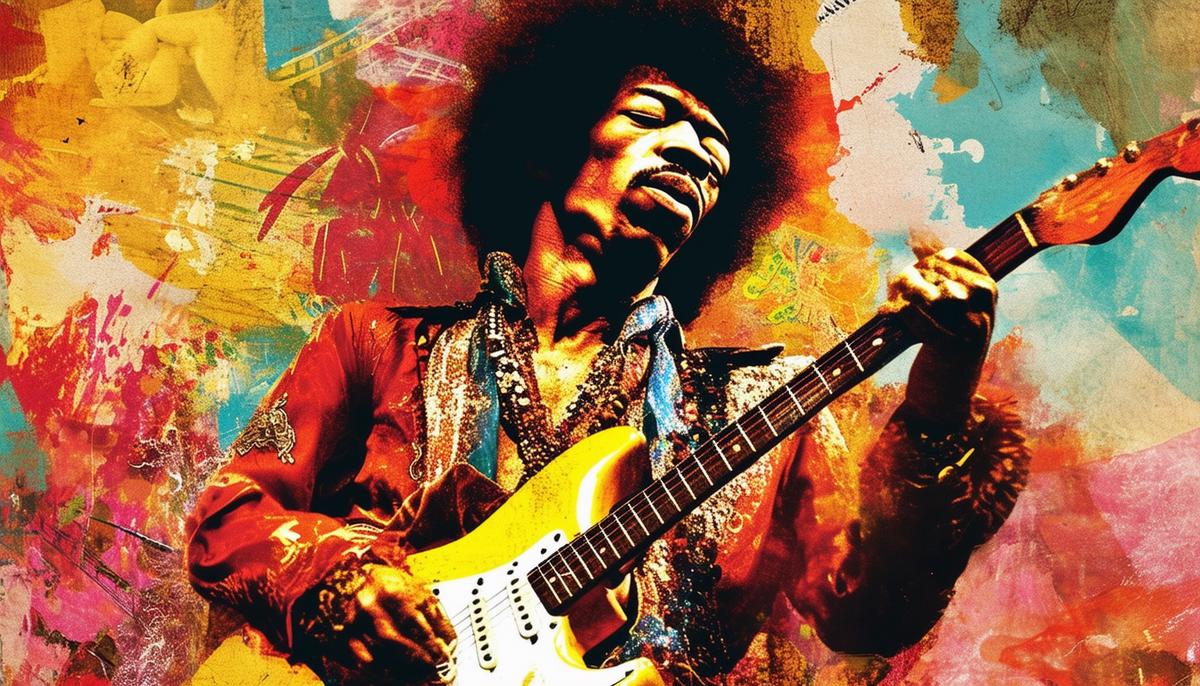Formation of Gypsy Suns and Rainbows
For Woodstock, Jimi Hendrix assembled a new band called Gypsy Suns and Rainbows. This lineup included:
- Billy Cox on bass
- Larry Lee on rhythm guitar and vocals
- Mitch Mitchell on drums (from the Jimi Hendrix Experience)
- Juma Sultan and Jerry Velez on percussion
This larger, more diverse group offered a broader sound than Hendrix's previous bands. The mix of African-American talents like Cox and Lee was a refreshing change from the Experience's lineup. Gypsy Suns and Rainbows fused rock, blues, and soul with psychedelic overtones, embodying Hendrix's musical vision for Woodstock.

Performance Details and Setlist
Hendrix took the Woodstock stage around 9 a.m. on Monday, August 18, 1969. Though the crowd had thinned to about 30,000, those who stayed witnessed something extraordinary. The set kicked off with "Message to Love," followed by a soulful "Hear My Train a-Comin'" and the electric "Spanish Castle Magic."
Larry Lee stepped up for "Mastermind" and "Lover Man," adding variety to the show. "Foxy Lady" showcased Hendrix's raw energy and guitar skills. The highlight was his instrumental version of "The Star-Spangled Banner," using distortion and feedback to capture the era's conflict and hope.
The set continued with "Purple Haze" and a "Woodstock Improvisation" that flowed into "Villanova Junction." An unexpected encore of "Hey Joe" wrapped up the performance – a rarity for Hendrix.
Hendrix and his band didn't just play music; they made a cultural statement that would echo through generations.

The Star-Spangled Banner Interpretation
Hendrix's rendition of "The Star-Spangled Banner" was more than just music—it was a cultural moment. Using his 1968 Olympic White Fender Stratocaster, he transformed the anthem into a commentary on 1960s America. His innovative use of feedback and distortion evoked the sounds of war, reflecting the ongoing conflict in Vietnam.
This performance breathed new life into the anthem, making it a canvas for the counterculture's hopes and dreams. It wasn't just a critique; it was an expression of possibility, capturing both the disillusionment and resilience of youth.
"I don't know, man… I'm an American, so I played it. They made me sing it in school, so it was a flashback."
Hendrix's interpretation opened doors for artists to reinterpret national symbols and blend traditional with avant-garde. The impact of this performance continues to resonate in music and culture, standing as a testament to the creativity and audacious spirit of the '60s.

Audience and Atmosphere
As Woodstock entered its unplanned fourth day, about 30,000 dedicated fans remained from the initial crowd of nearly half a million. These diehards had weathered rain and mud, creating a unique atmosphere of exhaustion and excitement.
The smaller audience didn't diminish Hendrix's impact. If anything, it created a more intimate experience. The chaotic environment seemed to amplify the intensity of his performance, turning it into a powerful statement of perseverance.
Hendrix played as the sun rose, his music weaving through the misty fields. The scene was a perfect encapsulation of the '60s spirit—a blend of counterculture ideals and raw humanity. This morning became a time capsule of an era, showcasing the magic that can happen when artist and audience connect in extraordinary circumstances.

Legacy and Impact
Hendrix's Woodstock performance has become a cultural touchstone that continues to influence rock and roll. His rendition of "The Star-Spangled Banner" remains a symbol of musical innovation and social commentary.
His influence extends beyond music, inspiring future music festivals and counterculture movements. Hendrix showed that musicians could be more than entertainers—they could be catalysts for social change. His genre-blending approach laid the groundwork for future artists to explore and innovate.
Woodstock became a blueprint for music festivals worldwide, with Hendrix's performance setting the bar for artistic authenticity. He inspired generations of musicians to use the stage as a platform for profound cultural expression.
More than 50 years later, the spirit of Woodstock lives on in festivals around the world. Hendrix's legacy continues to inspire artists to push boundaries and imagine new possibilities in music. His Woodstock performance wasn't just a moment in time—it was the beginning of a global musical renaissance that continues to this day.

Jimi Hendrix's Woodstock performance captured the spirit of an era and left a lasting mark on music history. His bold take on "The Star-Spangled Banner" showed how music can inspire change. Hendrix's legacy reminds us of what's possible when creativity meets courage.
- Murray CS. Crosstown Traffic: Jimi Hendrix and the Post-War Rock 'n' Roll Revolution. St. Martin's Press; 1989.
- Hopkins J. The Jimi Hendrix Experience. Arcade Publishing; 1996.
- Lang M. The Road to Woodstock. Ecco; 2009.
